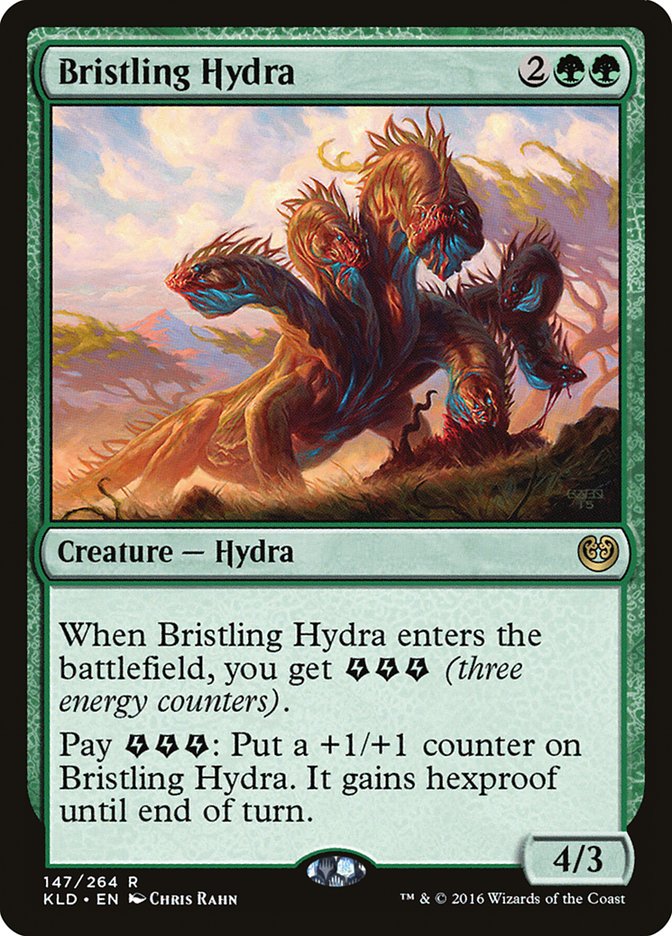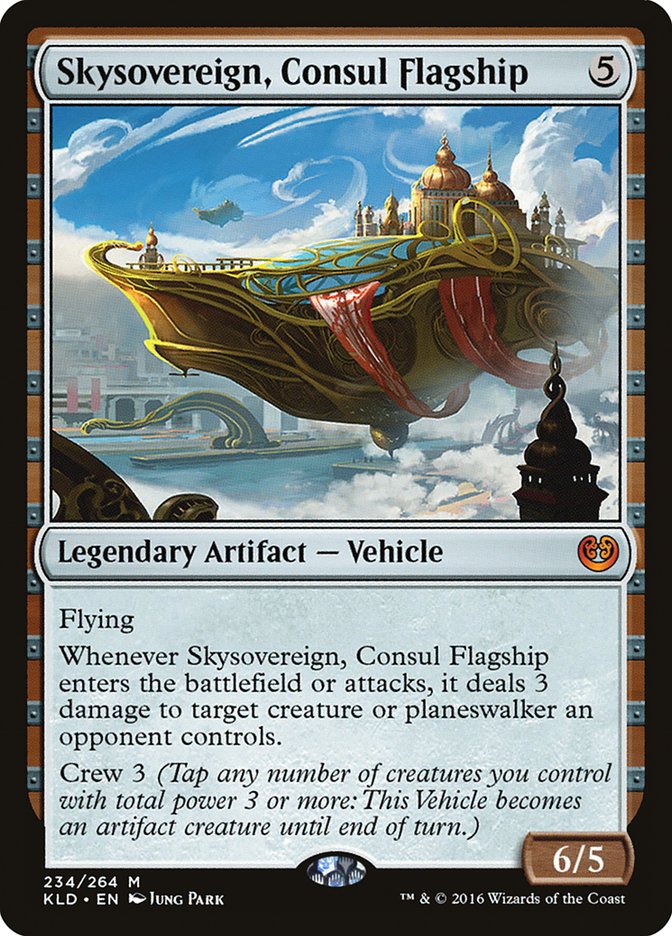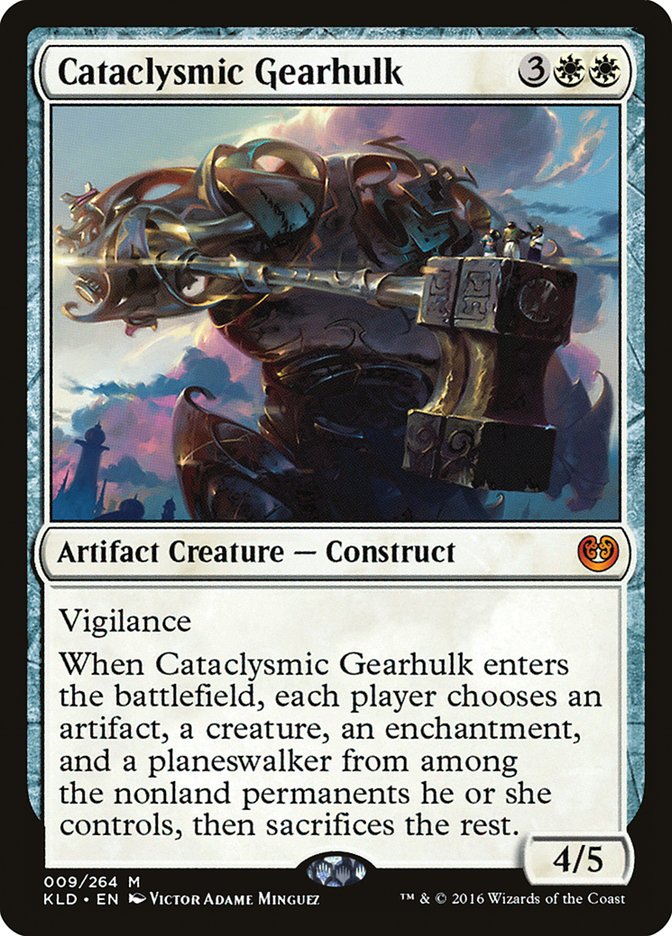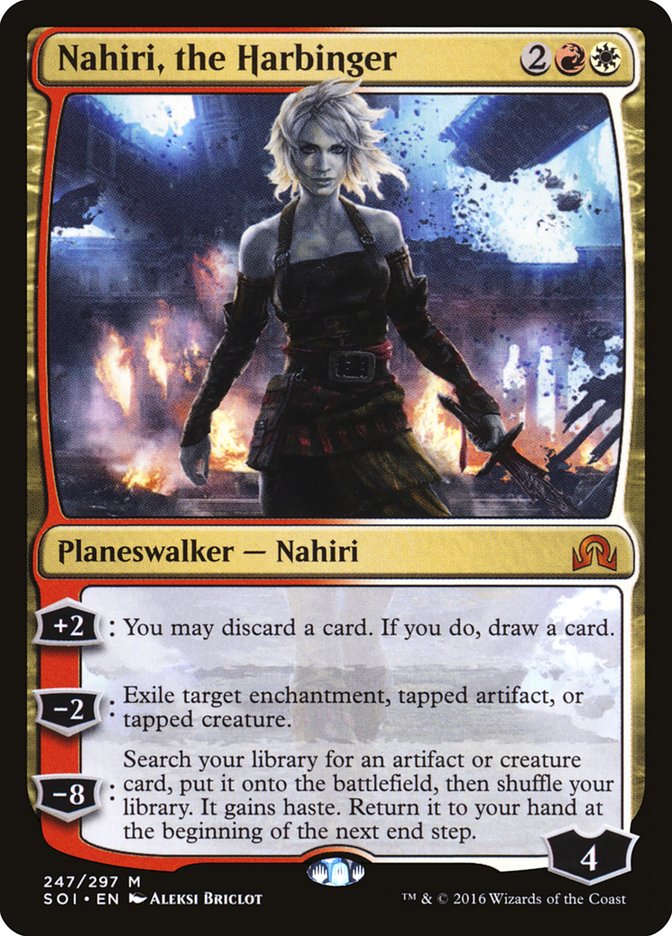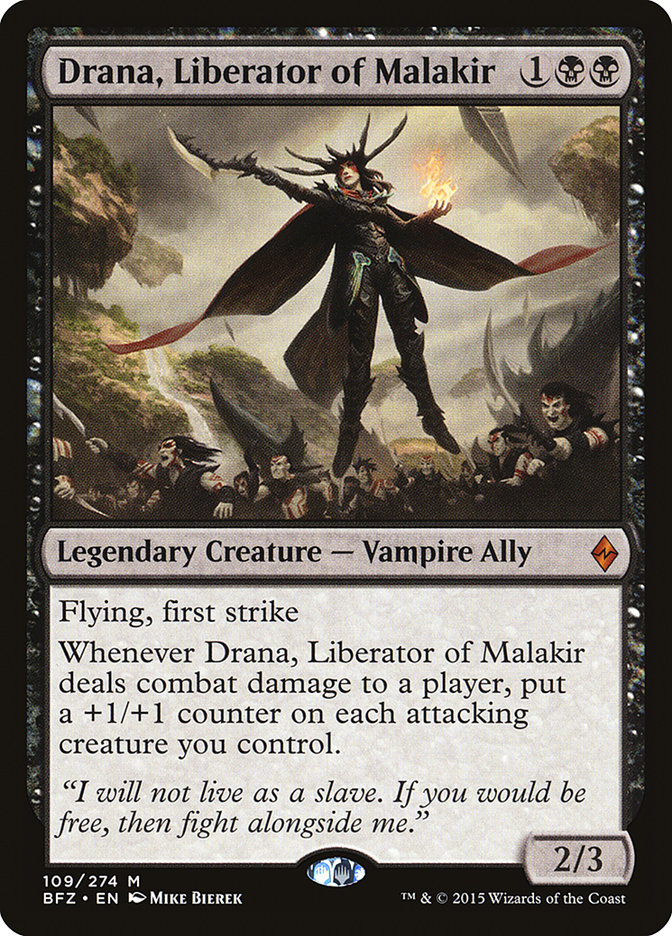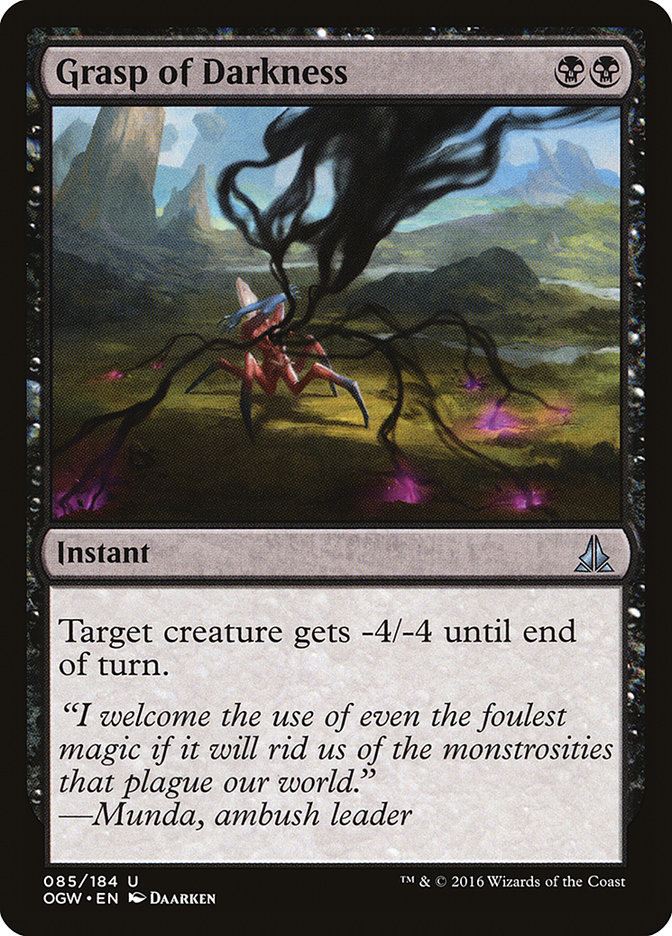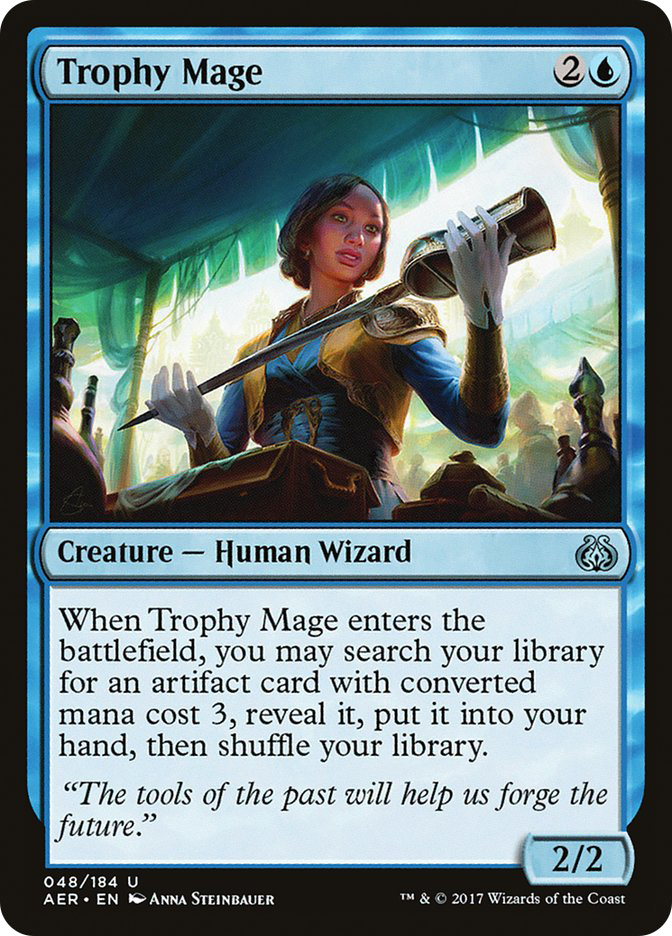For some, Grand Prix Denver is their next event, but that’s not all that’s happening this weekend. Thousands across the world will be trying to get a taste of Pro Tour success by winning their RPTQ. The format’s Standard, but no longer does that word reflect redundancy. The days of B/G Delirium, Four-Color Saheeli, and Temur Marvel are long gone, leaving a vast and fluctuating format in their wake. Things are moving swiftly these days in Standard, and that’s why today I wanted to answer any and all questions you had on the format. The tweets are here. Now all that has to be done is the answering of all these interesting and thought-provoking questions!
Is zombies a trap?
— david reed (@dsreed112) August 15, 2017
Even though I don’t like playing this deck, I don’t believe it is. In fact, it’s difficult to not consider it the best deck in the format. It’s a single-colored deck that gets to play the best removal spells and has the ability to gain virtual and true card advantage. I try to live by a code in Magic that’s effectively “Why play two colors when you can play one?” and “Why try to win long games when you can win short ones?” You should always try to have consistent strategies as long as they can win, and Mono-Black Zombies is that deck.
Creatures (21)
- 1 Kalitas, Traitor of Ghet
- 4 Relentless Dead
- 4 Diregraf Colossus
- 4 Cryptbreaker
- 4 Lord of the Accursed
- 4 Dread Wanderer
Lands (25)
Spells (14)

That said, it’s by far the most targeted deck at the moment, making it a riskier choice than it otherwise would be. Mono-Black Zombies is resilient, but inflexible as a strategy. Anyone who is a fan of my work knows I like to be as malleable as possible, often sacrificing power to do so. That’s why it’s so difficult for me to sleeve this up for a major event, but I have invested many hours into trying to get myself to like this deck. There’s a good chance I’ve played more with Mono-Black Zombies than any other deck in the past year outside of Four-Color Saheeli.
Mono-Black Zombies is a “safe” choice on the surface, but only if you know the deck well. You have to be certain how each deck will look after sideboarding against you and know with absolute certainty how you need to sequence to win these games. Without this base knowledge, you’ll just be playing a medium tribal-based strategy. There’s more to Zombies than just curving out.
If you know Zombies really well, I see no reason why you should consider another choice.
with the format becoming more midrange, should we be going under or over the top this weekend? Best decks for each approach?
— James O'Shaughnessy (@jameso_h2o) August 15, 2017
This is a very interesting question, and thank you for submitting it! Formats almost always seem to “even out” as time goes on. This is due to the collectives understanding of how all the strategies interact with each other. The better we understand how cards interact, the slower the strategies will becomes as they all have tools to react to one another. This is why we’ve seen cards like Bristling Hydra, Tireless Tracker, and Skysovereign, Consul Flagship all get stronger as each format go closer to another new set.
As things “middle out,” the individual power level of cards becomes more important. This is why it’s almost always correct to go “over” a format instead of “under.” Now, looking at things contextually to this specific format, the answer stays the same. We are right now dealing with a format that most recently remembered two mono-colored aggressive decks winning the last two Pro Tours. We are, as of right now, just getting over an aggressive past, which means people remember that the most. Decks may not be equipped to deal with Ramp or Control strategies, but they will for sure be prepared for tiny creatures.
I’m not saying Ramp and Control are good strategies, merely that it’s important to look towards individually powerful cards than streamlined aggressive decks if you are looking to dodge the midrange mumbo-jumbo.
How should mardu approach the zombies matchup
— Max McVety (@m_mcvety) August 15, 2017
Now this question has a very narrow audience, yet is extremely pertinent to those who play Mardu. For those of you who don’t know, Mardu Vehicles has a unique matchup against Mono-Black Zombies. By now, everyone knows how Mardu Vehicles is the closest thing to a Swiss Army knife this game may ever see, and that’s what makes this matchup so difficult. Each week Mardu Vehicles changes a great deal to keep up with the metagame, while Zombies relatively stays the same. With these changes, the Mardu Vehicles approach to the Zombies matchup changes as well. Sometimes you have room for powerful effects like Fumigate, which lets you take a control approach against Zombies. Sometimes you don’t need mass removal, and you then have to try to be more aggressive against Zombies.
The sad truth is this approach to the Zombies matchup is flawed. You have to respect them even at a cost to other matchups. There’s only one way I’ve found to consistently beat Zombies with Mardu Vehicles, and that’s with Cataclysmic Gearhulk and Nahiri, the Harbinger.
Cataclysmic Gearhulk is a house against Mono-Black Zombies out of Mardu Vehicles. That’s because you get to flip the script on them when it comes to mass removal. Whenever you Fumigate Mono-Black Zombies, they get to put creatures on the battlefield first. That means their removal is better, since you’re now second to the battlefield. With Cataclysmic Gearhulk, you are the first to attack, and with a 4/5 vigilance creature at that! Five toughness is perfect against cards like Grasp of Darkness and Dark Salvation, as it’s very difficult for them to get it off the battlefield. I tested this card a lot for Pro Tour Hour of Devastation and found it to be the best way to beat Zombies.
Sadly, though, Cataclysmic Gearhulk is only good against Zombies and U/W Monument, so you won’t be using these slots all that often. On top of that, Temur Energy and B/G Constrictor are back in the metagame, making Fumigate important again. It’s tough to find room for everything, but this is what I would register if I were to play Mardu this weekend.
Creatures (19)
- 2 Archangel Avacyn
- 4 Thraben Inspector
- 1 Pia Nalaar
- 4 Scrapheap Scrounger
- 4 Toolcraft Exemplar
- 4 Walking Ballista
Planeswalkers (3)
Lands (24)
Spells (14)

Playing both Fumigate and Cataclysmic Gearhulk does come at a cost, but I see no alternative. Temur Energy, Mono-Black Zombies, and B/G Constrictor will be played in high numbers this weekend. Having the tools to beat these decks is important. We do lose some ground against U/R Control, God-Pharaoh’s Gift, and U/W Approach, but I just don’t think they will be as heavily played as the midrange decks in the metagame.
All this said, Mardu Vehicles is that Swiss Army knife, and you should know your local metagame better than I do. If you have that inside information, please use it!
Why don't people play one copy of Drana in BG?
— Ben Collins (@bencollins) August 15, 2017
Simply put, Drana, Liberator of Malka needs too many things to go right for it to be worth the investment. For starters, you need to draw it early for it to be effective. Then you need it to attack, and get through at the very least for its ability to trigger. You then need even more creatures to be attacking for it to produce the effect you put it in the deck for in the first place. All in all, it’s just too much to ask for, which is why we’ve seen the card do almost nothing since it was revealed.
This question does bring up an interesting theory, however. For the longest time, I’ve thought we as a collective don’t play enough powerful one-ofs in Standard. Whatever the reason, whether it’s aesthetics or lack of vision, we rarely do it. It’s tough to know when playing one Aethersphere Harvester or Skysovereign, Consul Flagship is correct, but I believe it’s more often than we do it. (Don’t get stuck on these Vehicles; they are just examples.)
The theory of playing “fun-ofs” is dense, unexplored, and difficult to articulate. Maybe it’s an article topic for later down the road, but it’s not something that can be discussed without the proper preparation. Just something to keep in mind when you design decklists.
What's your pre-competition routine? (day of, night before)
— Jonathan Carter (@ECNjonathan) August 15, 2017
This doesn’t really have much to do with this weekend, but it’s interesting nonetheless. I’m often an “early to bed, early to rise” type of person. I normally sleep seven hours, so I try to be awake three hours before competition. That can be difficult sometimes, as I don’t start playing Day 1 of a Grand Prix until around 2 PM, yet Day 2 starts at 9 AM. I just believe in being as alert as I can be going into the first round of the day. I’ll even play a couple of practice games to make sure I’m in the right mindset. This can cause me to become sluggish in the single-elimination rounds when I find myself participating in them, but it’s a cost I’m willing to take. I just really believe in being your best right off the bat.
Other than that, I eat a good breakfast and then snack for the rest of the day. I never want to “carb up” mid-day as it’s another way to feel sluggish going into that next round. I drink lots of water during tournaments, more than on the other days of the week, so much that it’s become a joke with some pros out there as I am in the bathroom many times during an event. I just find that it’s easy to get dehydrated during a long day of competition or feel hungry. Both aren’t good for staying as focused as you can be to make the best decisions throughout a long event.
I also always value sleep over sideboard slots. I see so many players the night before an event torturing themselves deep into the night about one slot. That should have been figured out ahead of time, but even if it wasn’t possible, it shouldn’t be hindering sleep. That one card won’t have a higher impact on your event than an hour or two of sleep will. If the decision is close, then either way it won’t be bad to have chosen incorrectly. As long as you have your plans of attack, you will be better off being slightly card-suboptimal than tired and sluggish.
Should I play BG, Temur, or something else in the RPTQ?
— Pat Cox (@wildestnacatl) August 15, 2017
All right, back to the task at hand. This question allows us to get into the real meat and potatoes of this format. Let’s break it down a little.
I was unsure of my choice to play B/G Constrictor at Grand Prix Minneapolis for a multitude of reasons. I played it for its good Ramunap Red matchup, but also because it was built to be the best it could be against Mono-Black Zombies without bending over backwards against the strategy. Other than that, I was nervous to play against any of the fringe decks in the format. Not to say they are unwinnable, but they aren’t easy. It’s even harder to pick this deck now that Temur Energy seems to be back.
Now, Temur Energy is a deck I no longer respect as a good choice. This deck was always a great shell for broken things like the Saheeli Rai / Felidar Guardian combo as well as Aetherworks Marvel, but it doesn’t stand up that well for itself.
Now, it’s a fine deck; let’s get that straight. It just doesn’t have many great matchups, making me feel like it will always let me down in the end. That said, it preys on B/G Constrictor, as both Chandra, Torch of Defiance, and Glorybringer can be backbreaking against a B/G Constrictor opponent that hasn’t had time to set up a battlefield position.
Creatures (23)
- 4 Longtusk Cub
- 4 Bristling Hydra
- 4 Whirler Virtuoso
- 4 Servant of the Conduit
- 4 Rogue Refiner
- 3 Glorybringer
Lands (15)
Spells (22)

The deck has a fine Mono-Black Zombies matchup and can be tailored to have a chance against anything. I have heard rumblings that a splash for The Scarab God in Temur Energy is great for beating both B/G Constrictor and the mirror, but it’s something I haven’t had a chance to try myself.
As of right now, my front runner for best deck choice is Mardu Vehicles. It doesn’t have to be my exact list from earlier, but something similar. The deck’s just good, but it also gives you the ability to outmaneuver more opponents after sideboard. It’s not the easiest deck to navigate through a field, but the hard work put into preparation will pay dividends. Now, if you don’t have a ton of time to prepare for this weekend, I would suggest Mono-Black Zombies for reasons previously mentioned. I just don’t have much faith in B/G Constrictor or Temur Energy getting me over the finish line.
Is there a difference in how you approach tournaments with 50 people vs the approach for tournaments with 500+?
— Emma Handy (@Em_TeeGee) August 15, 2017
For starters, may I point you toward an article I wrote a few years ago about this very topic. I’ll do my best to “update” this information a little, as well as reiterate some of the lessons for those who don’t have the time to go back and read that dense article.
This question can be broken down even further, but I don’t know if it will apply to that many people. I approach almost every tournament differently to some extent. The factors are often size of event, projected talent of field, and preparation time. So let’s start with the initial question and examine tournament size. Now, a tournament that holds 50 people will most likely be a local event where you can only take one loss. There’s not much room for error here, and thus you can’t take as many risks as you could for an Open, for example. This usually involves “scooping matchups,” which I do quite often in large events like Opens or Grand Prix.
That’s because you can take a loss or two in the event, and I’d rather increase my chances across the board than try to win a losing battle against one deck. Now, in a field of 50 I still might do this, but I sure do like to “double-down” in larger events. This is broken down even further in the aforementioned article, so if you skipped it yet still want more on the subject, go check it out.
Now, what about Worlds? It has only 24 people, but at the same time it’s fourteen rounds, eight of them Constructed. Here you see the density of skill rise. When I believe I’m the best player in the room, I’ll often choose decks that allow me to straight-up outplay my opponents. When the field is better than me, I’ll try to lean on the cards more, especially when information is visible. It’s vital you choose decks that cater to your skillset, yet many mistake this as “style.” You are not a “control player,” nor are you a “beatdown player.” It is not correct for Tom Ross to always play aggro, or for Shaheen Soorani to always play control. Sure, these two have become accustomed to their fields thanks to invested time, but that doesn’t mean their ceiling couldn’t be raised by branching out a little.
Which Todd is the best Todd to have ever played Magic? Which is currently the best active Todd?
— Jim Casale (@Phrost_) August 15, 2017
Now, this question is clearly intended as a joke, but it does help prove my point here. I initially took this question as an opportunity to dig either Todd Stevens or Todd Anderson. Once I started thinking about it, I came to realize there’s a lesson to learn here. Now, Todd Anderson is a stronger player than Todd Stevens. It’s not close, actually, but what Stevens lacks in in-game skill is made up by his determination to select good decks. He understands his limitations, and thus mitigates them by being disciplined. Anderson is anything but disciplined.
Creatures (18)
Planeswalkers (2)
Lands (24)
Spells (16)

Creatures (24)
- 4 Bygone Bishop
- 4 Thraben Inspector
- 4 Hanweir Militia Captain
- 4 Spell Queller
- 4 Selfless Spirit
- 4 Cloudblazer
Lands (25)
Spells (11)

Stevens will work hard to find decks that help facilitate good finishes even through skill deficits, while Anderson will constantly make poor deck choices, leaning on his skill advantage. Often that advantage is enough due to how good he can be at times. Who’s right?
My guess is Anderson will always be a better player than Stevens, but at the current rate Stevens will have a better career in Magic. That’s because once you get great at playing the game, the only way to get “better” is to make better deck decisions for yourself. Todd Anderson, Shaheen Soorani, and Tom Ross are all limited by their deck decisions, while Todd Stevens is cultivating a healthy foundation for choosing good decks. He’s well-rounded and will have the ability to pick decks tailored for a specific metagame. He’s learning how to pick the best decks for him, not limiting himself in any way. As he gets stronger at the game, he opens himself up to the harder-to-pilot decks. In all honesty, if you want to become a pro Magic player in 2017, I suggest replicating Todd Stevens’s approach in every way.
Except for all this dapper stuff. It’s so overdone!
Wow, Emma’s question sure did get away from me. To wrap things up, you should constantly be looking for ways to improve your deck selection and all choices that go with it. Hope this opened your eyes a little on the subject, but if you have further questions about it, don’t be afraid to ask them. I could see myself writing another article discussing this in-depth if there’s interest.
Why does BG play 7 swamps and 9 forests?
— Aaron Sorrells (@JoltAaronS) August 15, 2017
We desperately need a palate cleanser, and this question is exactly that. For reference, this is the deck I played at Grand Prix Minneapolis.
Creatures (20)
- 3 Catacomb Sifter
- 4 Sylvan Advocate
- 3 Verdurous Gearhulk
- 4 Winding Constrictor
- 2 Rishkar, Peema Renegade
- 4 Walking Ballista
Planeswalkers (4)
Lands (24)
Spells (12)

Now, many of the SCG Tour’s finest have been giving me guff about this decision, so I thought it’s about time to educate some children. Just because you play Grasp of Darkness doesn’t mean you need more sources of black mana to facilitate them. We will start there. I won’t even get into the deck playing Oath of Nissa, which can find black sources in a pinch. It all comes down to curving potential.
Being able to cast Grasp of Darkness when you look at an opening hand with one isn’t as vital as being able to cast your early permanents. B/G Constrictor is not a control deck, and thus doesn’t want to spend turn 2 casting a removal spell. It wants to get on the battlefield. Now, obviously you will want to be able to do this sometimes, but it’s not the intended purpose of the deck. This deck wants to play threats first and removal second.
Going a little deeper, you will often need three green sources as early as turn 4. Sometimes you will sacrifice a Scion on turn 4 so you can “combo” with Winding Constrictor and Nissa, Voice of Zendikar. Sure does sound better than being able to cast Grasp of Darkness on turn 2, does it not?
Bombed my RPTQ after solid prep and deck choice. What are the best ways you've found to bounce back from a rough event? Thanks!
— Thomas Gunn (@impact36inc) August 15, 2017
Coming up short sucks. There’s no need to put it eloquently. You put work into accomplishing a goal and miss. The brutal truth about Magic competition is there are far more rough events than good ones. Coverage masks this fact by always showing you those who are doing well in events. They don’t shine a light on a pro player who finished dead last in their last five events. Why would they do that? That would be like only posting on Facebook when you and your significant other get into a blowout fight. Sadness doesn’t sell!
The only way I’ve learned to deal with the heartache of failure is to always finish an event by learning everything I can from it, and then move on. Did I build my deck correctly? Were my sideboard plans on point? Should I have used that Grasp of Darkness on their Glorybringer? Every event has lessons to be learned as long as you are willing to look for them. It might be tough to be so objective after every event, good or bad, but once you’re conditioned, it will almost feel second nature to constantly be trying to improve your game.
Now, there is a downside to this process. For example, Grand Prix Omaha only reminds me of punting Game 2 of the finals and missing energy triggers Rounds 4, 10, and in the finals. I also should have conceded to Paul Dean in Round 15 instead of drawing so that we wouldn’t be able to play until the finals. After all, he was my biggest threat left in the event. How could I have let myself do these things?
The more you focus on getting better, the higher your lows will feel, but at the same time your highs won’t feel as high. I believe this tradeoff will slowly make you better at the game, but the cost may be too big for you.
Should I sideboard immediately after winning the tournament or not?
— Quinton Crisman (@QDCHQ) August 15, 2017
No!
No!
No! No! No! No! No! No!
I know I’ve taken a weird stance on this. I get it. It’s just so awkward to watch the finals of a tournament and watch someone fiddle with their cards. We keep talking about ways to make Magic more appealing for coverage. Being excited about winning would be a good start! I understand not wanting to hurt an opponent’s feelings, but celebrating a win shouldn’t do that. If they get offended, that’s their poison. Losing sucks, but I’m on the side that would rather see someone happy about taking something from me than not be fazed by it.
That’s all I got for this week, but I’m willing to answer last-minute questions in the comments if you didn’t get a chance to ask them on Twitter for the article itself. I can’t promise I will get to everyone, since I am still back home on vacation, but I will do my best! Good luck this weekend, and I hope to see you on the Pro Tour this year!


